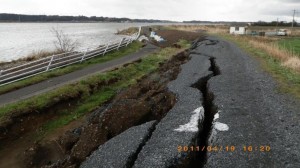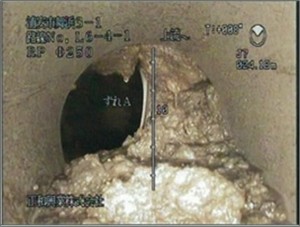TECHNICAL ARTICLE
Ongoing Study on Protection of Personal Houses from
Liquefaction Problems
Ikuo Towhata Professor, Department of Civil engineering, the University of Tokyo
Kazuo Konagai Professor, Institute of Industrial Science, the University of Tokyo
Takashi Kiyota Associate Professor, Institute of Industrial Science, the University of Tokyo
INTRODUCTION
Two years are going to pass after the M=9 gigantic earthquake in Japan that took place on March 11, 2011. Because the earthquake damage caused many new problems, attempts for reconstruction are still going on, and one of the very difficult problems concerns the liquefaction damage on personal properties. Because the authors had an opportunity to present their study during the 4th International Symposium on Forensic Geotechnical Engineering, Bangalore, India, in January, 2013, they re-write their paper for this issue of ISSMGE Bulletin. It is aimed to discuss what has been missing in the traditional kind of geotechnical earthquake engineering.
Traditional technology on mitigation of liquefaction problems started to develop in 1960s after two earthquake disasters in Alaska and Niigata. Many achievements have been made with rational or sophisticated approaches such as the use of SPT-N or CPT for subsoil investigations, collection of undisturbed soil samples for laboratory tests, and densification or grouting or installation of gravel drains for damage mitigation by using big construction machines. Consequently, the vulnerability of many structures have been drastically reduced in the recent times and the earthquake in 2011 caused few liquefaction problems in engineered important structures. It is, however, noteworthy that those measures are feasible only when sufficient financial resources are available.
During the earthquakes in 2010 and 2011, liquefaction affected such structures as river levees (Photo 1), embedded life lines (Photo 2), and personal houses (see the next chapter). Those structures are characterized by their limited budgets that are available for disaster mitigation. Levees and lifelines are too long for the overall reinforcement against subsoil liquefaction. Their construction cost per unit length does not allow the significant reinforcement either. Consequently, the disaster management philosophy in the past aimed to restore any seismic damage within a short period of time after a quake.

Photo 1. Liquefaction damage in Hinuma levee

Photo 2. Disconnection of sewage pipeline and deposit of sand after liquefaction (damage study in Tokyo Bay area, 2011)
Download ISSMGE Bulletin – Volume 6 Issue 6 (pp. 8-17)
![]() PDF format
PDF format




































